Dragon Ball Z: Extreme Butoden (Nintendo 3DS) Review
By Rudy Lavaux  15.11.2015
15.11.2015
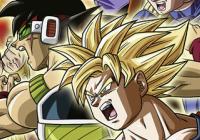
Anyone knows how big Dragon Ball is over on its home turf, as a licence. From the manga that started it all, very loosely inspired by the traditional Chinese story Journey to the West, to the even bigger anime adaptations of the books. It took its time to be properly adapted in English, but, meanwhile, it was also enjoying quite a bit of success in the French speaking parts of Europe, as well as Spain. The franchise got adapted into lots of different kinds of media, and this included video games on the Famicom, and then, subsequently, on the Super Famicom. The latter saw no less than four different fighting games based on the "Z" anime series, which was still being aired in Japan at the time, as the Super Famicom was the most popular platform in the Land of the Rising Sun. Three Super Butoden games were produced, as well as Dragon Ball Z: Hyper Dimension. All of those games were released in Europe, but exclusively in French speaking regions and Spain, albeit in badly translated form. Nevertheless, it helped introduce non-Japanese audiences to the joys of throwing massive attacks, pretending to be Goku and co. Now, all these years later, and after a brilliant, yet, sadly, Japanese-exclusive Nintendo DS iteration in the Butoden series with Dragon Ball Kai: Ultimate Butoden, the series comes back to grace all regions of the world on Nintendo 3DS.
The first three games were produced as the anime series was going strong in Japan, with each iteration following several story arcs of the plot already aired in Japan so far. By the time the third game came out, the anime series had almost reached its conclusion, so the initial trilogy followed all story arcs in the series, from the arrival of Radditz on earth to the battles against Majin Buu, with Hyper Dimension released several years down the line after the end of the anime, very late into the life of the Super Nintendo, wrapping things up with the Kid Buu story. This is relevant as far as this 3DS game is concerned, since it, too, covers all of the same story, and makes playable just about all of the same characters from the original trilogy, plus Hyper Dimension, inside one game, save for a select few being made assist characters, instead of directly playable, and some new ones getting incorporated, as well.
Following the same form of logic as the games that started it all, players battle it out, one-on-one, in familiar locations of the Dragon Ball universe. The mechanics, although expanded upon, follow an almost identical logic to the Super Famicom games. Regular hits can be exchanged, as in any fighting games, but all characters have the exact same combo set. Players have health and ki bars, and in order to unleash powerful moves, such as the iconic kamehameha or genkidama, they must charge up their ki bar to a certain level. Ki can be built up either by taking or inflicting damage, or by holding down a button - the latter, however, leaving the player vulnerable to enemy attacks.
The powerful moves, in this case, can only be performed when one of the players performs one particular button combination that sends the character flying up or down to a different plane of the stage (ground or air), and on the condition that the player has built up enough ki. Just as in the original games, the most powerful moves can only be unleashed after taking vast amounts of damage, and the character entering a special mode is represented by a flaming icon on the screen. The ki level can then be built up to a higher level than the regular maximum, allowing the most devastating, and still recognisable, move from key moments of the series to be performed. However, the best and most recognisable part of the game lies in what happens at the clash of powerful moves.
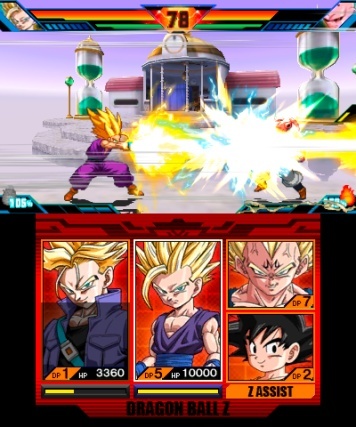
Indeed, as was the case in the Super Famicom games, when one player unleashes a powerful move - for example, Goku unleashing a Kamehameha - the other player - for example, Vegeta - will get a window of opportunity to fight back, on the condition that they, too, have the relevant amount of required ki, by unleashing their Final Flash. What ensues is the two beams of energy colliding in a spectacular fashion, and a duel for which player can mash the A button the fastest occurs, as both energy waves can be seen pushing one another into the two directions. This most iconic aspect of the original trilogy being brought back was a clever move, while the fact that fights play with tag teams, instead of purely one-on-one, adds an additional level of dynamism that makes the nervous gameplay all the more enjoyable. It's just a shame that the amount of actually playable characters is so limited, and so many of the great combatants that could have brought more variety were relegated to being assist characters, instead, despite being playable in the past, such as Kaioshin. Six extra assist characters have been made available as pre-order bonuses, however.
Of course, a Dragon Ball Z fighting game wouldn't be complete without a plethora of game modes on offer. In the version Cubed3 got access to, only the story mode is available right from the start and forces the player to replay through the classic story of Dragon Ball Z, first from the point of view of Goku, then from the point of view of the many other main playable characters. This only affects the story-telling segments, though, served through long (unfortunately, uninteresting) text dialogue with no voice-over and still portraits. Any character can be chosen to play through these segments, no matter whose story is picked.
Only the Goku one is forced onto the player and is done with pretty quickly, unlocking the adventure mode. This one makes much of the meat of the game and features an entirely new story, seeing Goku travelling back to familiar locations of the game universe, and having to fight, once again, most villains of the story, or training against his friends to prepare for the aforementioned battles. Each spot on the map holds a battle and players' skill is given a rank at the end, which rewards with Zeni (the currency in the Dragon Ball universe), an item of be used to gain an advantage in battle, or - better yet - an unlockable assist character.
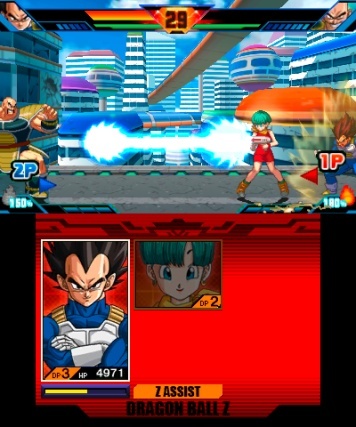
Those are aplenty and can be called to help - some of them being really useful, while others will be totally useless, but serve an undeniable comical effect that will appeal to fans of the series, mostly. The adventure mode in turn unlocks the tournament mode, a classic staple of the series, as players will relive the classic environment of the Tenkaichi Budokai seen multiple times throughout the franchise - otherwise known as the World Martial Arts Tournament - having to knock down opponents in order to progress towards the final, and, finally, winning the tournament.
Naturally, a fighting game wouldn't be complete without the classic modes allowing fights against the computer itself in a quick match, as well as versus other human players. Unfortunately, this can only be done in local multiplayer, taking away much of the fun that could otherwise be had from the game, since playing against other players was always the best part of Dragon Ball games, letting fans relive the memories of their favourite scenes from the series. The selection of modes is rounded up by a mostly useless StreetPass functionality, as well as a library of character profiles and collections of the audio clips they yell inside the game itself.
Arc System Works certainly did a good job at replicating and expanding on the mechanics that really made the original games stand out in the midst of Street Fighter II clones at the time of their original release. Indeed, it must not be forgotten that back when the original Super Famicom games were released, Street Fighter II was still fairly new, and being copied ad nauseam by the competition, and enjoyable fighting games that didn't follow the formula of SFII by the book were a rarity. In this day and age, the Dragon Ball Z: Super Butoden formula still feels original, even to anybody who is used to battling Street Fighter style or in any of its many clones. Arc System Works is very well known for its Guilty Gear and BlazBlue series, both of which build on the Street Fighter II legacy like so many others, heavy on quarter circle + button presses, and so on... Therefore, it is nice to see the developer tackling this other style, as well.
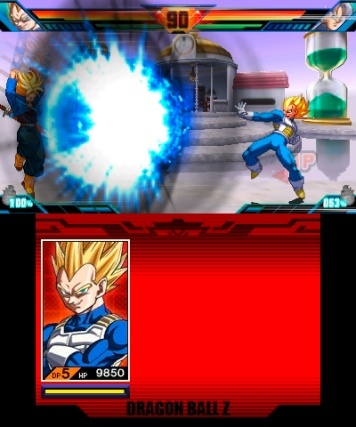
Arc System Works' way of doing things transpires through. The team is, indeed, not known to risk going the fully 3D route, and has always stuck to its forte of designing splendid looking 2D sprites, masterfully animated, against occasionally 3D backgrounds. This is the case here, just as it was in Dragon Ball Z: Shin Butoden for the SEGA Saturn, as well as Arc System's own Dragon Ball Z: Supersonic Warriors 2 on the original Nintendo DS - although, obviously, the added resolution and processing power of the Nintendo 3DS allows the team to craft, if not beautiful HD 2D sprites, much better and animated looking ones compared to its previous effort.
The whole thing looks great, particularly the ultimate attacks; however, the chosen strictly 2D style works against the presentation of the story. It wouldn't be such a big deal if there hadn't been Dragon Ball Kai: Ultimate Butoden released before it for the original Nintendo DS, as well as the Dragon Ball: Origins games on the same platform. Those showed how the use of 3D models, accompanied by the use of lots of voice clips in the case of Ultimate Butoden, helps really give the impression of reliving the high points of the story. Here, still character portraits without any voice clips whatsoever make the exciting story of Dragon Ball Z feel boring by comparison. It is, indeed, a sad thing to state, but its predecessor for the DS looked better, and might even have sounded better, as well, as the few voice clips in Extreme Butoden sound extremely compressed.
With Arc System Works having seemingly no expertise with 3D character models, it is hard to fault the developer directly for this, but, rather, the choice of developer in the first place. That is not to say that all is grim, though, because as far as gameplay goes, Dragon Ball Z: Extreme Butoden is the one that gives off the best feeling of control while being played. If the highly cinematic sense of dynamism of Dragon Ball doesn't shine through in the presentation quite as brilliantly as it did in Ultimate Butoden, Extreme Butoden does feel loads better when it is actually played, and undeniably serves as a great throwback to the feeling of satisfaction induced by the original trilogy back in its day - and the fact that Super Butoden 2 is offered as a pre-order bonus seems to indicate that this was exactly what the development team was aiming for. If the gameplay of the originals isn't exactly replicated, the simple idea of having to perform tight quarter circles and convoluted directional inputs on the Circle Pad, or - worse, even - on the tiny squeaky D-pad of the original 3DS model, is a frightening one, indeed, so shaking up this part of the original recipe works for the best on the hardware at hand.
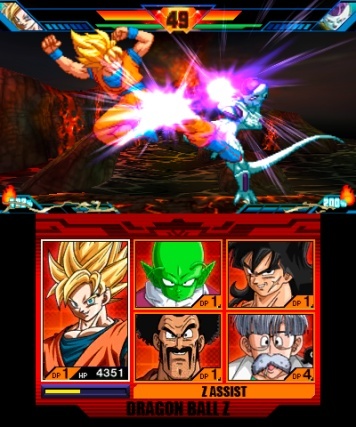
Cubed3 Rating
Good
If it may not succeed at making the now-classic and well-known story of Dragon Ball Z very interesting through its artistic choices, Dragon Ball Z: Extreme Butoden does succeed at making players feel in control of the action and giving a good sense of thrill to whoever plays it in the actual battles. The new exclusive story of the adventure mode fails to truly capture the passion of the Dragon Ball Z fan inside, but the mode itself is rich enough in things to unlock to last a good while, offering a tough challenge. More playable characters would have been a plus to make the package really stand out as a must have, though. Seeing what developers have done so far with the franchise on Nintendo handhelds, fans can only dream of seeing, perhaps, in the future the excellent expertise of Game Republic beefing up the presentation of Dragon Ball games on portable systems, combined with the gameplay expertise of Arc System Works to make a true "Dragon Ball Z: Ultimate Extreme Absolute Butoden." The lack of an online mode, however, is purely inexcusable.

![]() 6/10
6/10
![]() 0
(0 Votes)
0
(0 Votes)
 Out now
Out now  Out now
Out now  Out now
Out now  Out now
Out now Comments
Comments are currently disabled

 Sign In
Sign In Game Details
Game Details Subscribe to this topic
Subscribe to this topic Features
Features





 Top
Top

